A quick look at the many uses for my new 14-in-1 painter’s tool. Plus, why I keep buying multi-tools!
This post contains affiliate links. If you make a purchase, I may receive a small commission at no additional cost to you.
I love multi-tools. I have a Swiss Army Knife, a Leatherman, and even one of those flat credit card sized tools that can do 12 different things but probably can’t be legally carried on an airplane.
Today I almost bought a cute little combination flashlight/bottle opener at the checkout at Lowe’s, before I realized I was already carrying both those tools on me at the time, in the form of other multi-tools.
Basically, if you can make my life easier and more efficient, you have my heart.
So when I was killing time at the hardware store the other evening, waiting for my hubby to choose between two different styles of light switch plates (this is what we do on our dates these days), I wandered into the paint aisle, my happy place.
Before long, a 14-in-1 painter’s tool made its way into my hands. It seemed like the perfect multi-tool, even if I didn’t have a clue about half its functions.
Some guys buy their wives flowers, mine buys me tools. They last longer, and he gets to enjoy them too. (For Mother’s Day, I’m getting a new chop-saw, but that’s a story for another day.)
Long story short, I batted my eyelashes at my date and a few minutes later we walked out with his light switches and my new multi-tool.

When I got home with my treasure, I realized there was nothing on the packaging to tell me how to use this miracle of efficiency. So I did what any savvy DIY-er would do, I googled it. I couldn’t believe how little information I found. I guess this is one of those things that, if you don’t know how to use it, you shouldn’t be buying it?
So I did a little more digging and found out what all the little pieces of this tool do, and I’m passing my research on to you so you won’t feel as left out as I did, if you decide you need one of these.
So what does a 14-in-1 painter’s tool do?
Everything except actually paint.
1. Hammer – perfect for pounding the lid back on the paint can. (I can’t tell you how much paint I’ve ruined because I forgot this crucial step.)
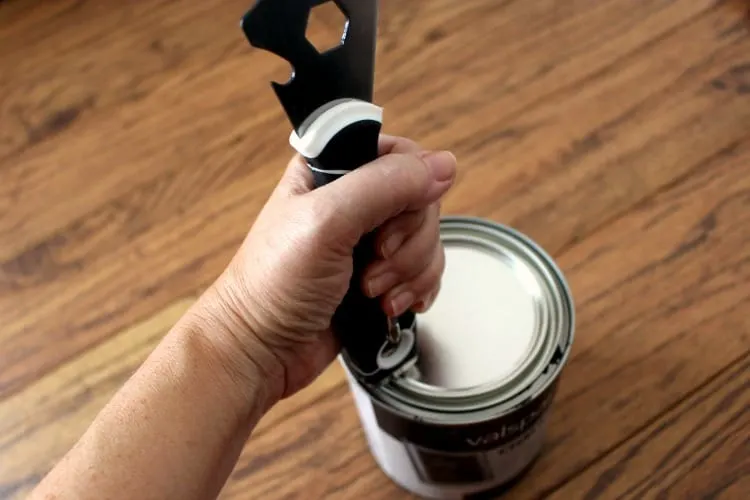
2. Flat Screw Bit – for unscrewing plate covers like light switches and plugs.
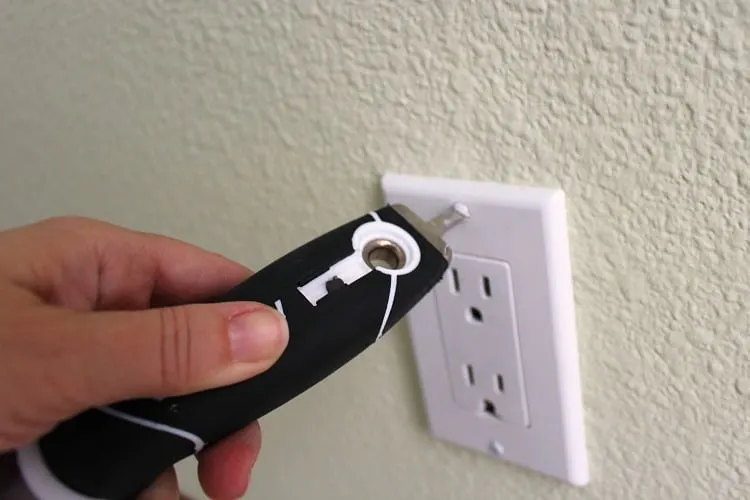
3. Philips Screw Bit – every time I paint a room, it never fails that one plate cover uses Philips instead of flat.
4. Large Hex Nut Wrench – supposedly the nut wrenches are sized to fit those commonly found on paint sprayers.
5. Small Hex Nut Wrench – same deal, just smaller.
6. Convex Scraper – great for scraping paint off curvy molding.
7. Concave Scraper – every curve has an equal and opposite reaction. Or something like that.
8. Nail Puller – there’s always that one nail you missed when you were prepping the room for paint.
9. Crack Opener – ever wondered how to get a clean edge around your ceiling, without taping? Simply run this end along the edge where the wall meets the ceiling, and you’ll create a little trench for your paint brush to safely follow, without overlapping onto the ceiling.
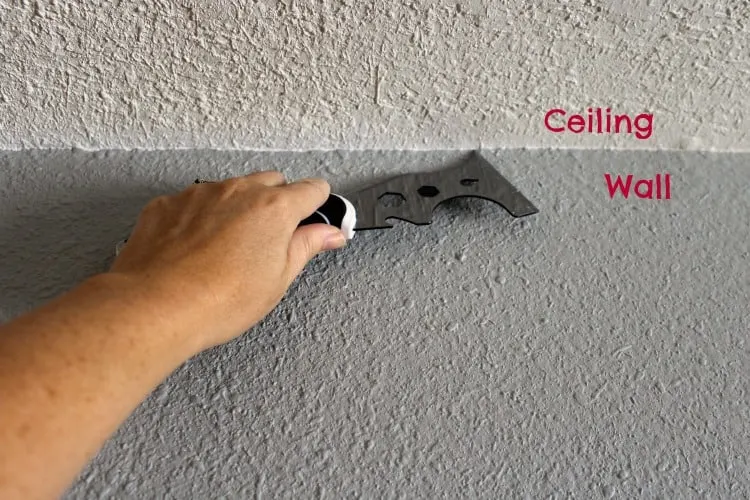
10. Chisel – this sharp edge is for scraping off flaking paint.
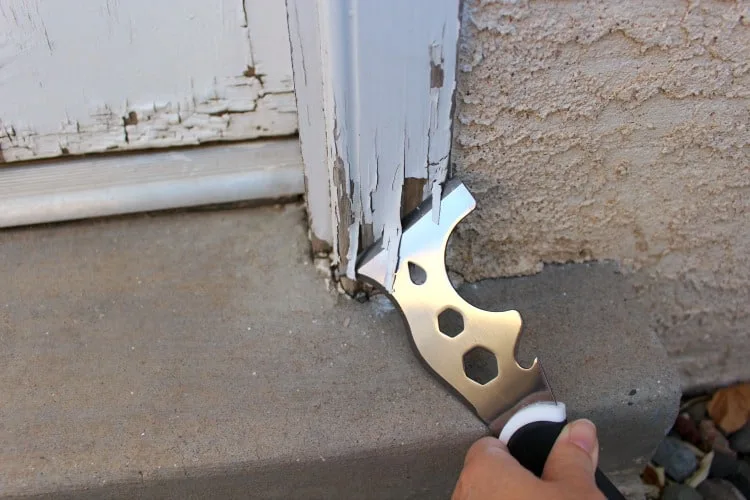
11. Spreader – flip the tool over to the dull side and this edge is great for applying spackle while prepping the walls.
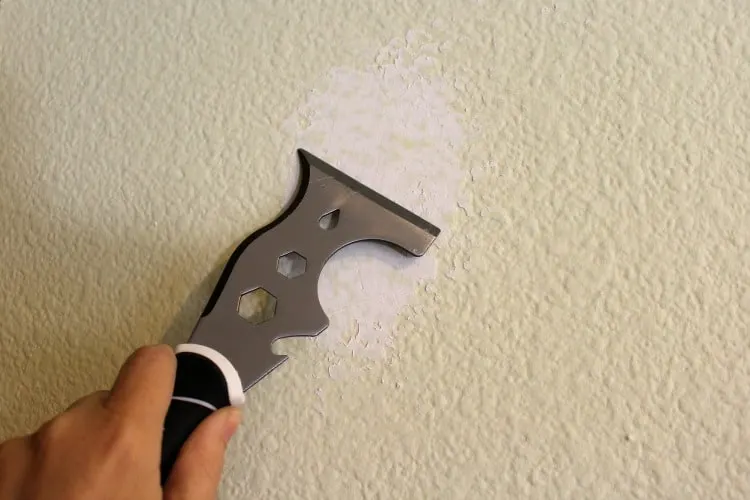
12. Paint Can Opener – no more searching for a screwdriver or that little pry key when you’re itching to get started.
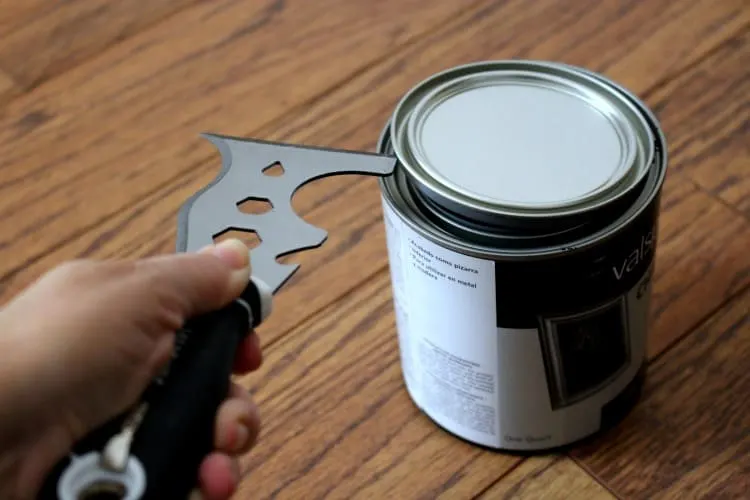
13. Roller Cleaner – you can save a lot of paint, and clean-up time, by scraping any remaining paint off your roller before washing it.
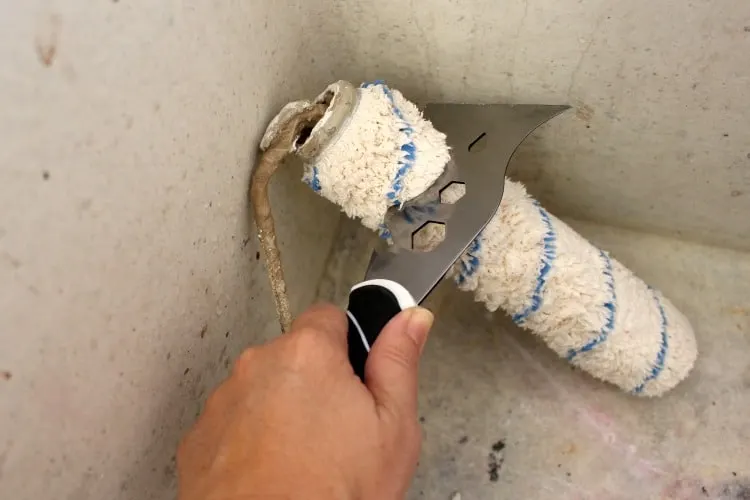
14. Bottle Opener – and last but certainly not least, this one’s pretty self explanatory at the end of a long day of painting.
There are probably plenty of other uses for this tool, but this is as far as I’ve gotten. Now it’s time for me to put this baby to work. I’ve got some scraping, screwing, hammering, cleaning, and (let’s not forget) painting to do!
Even More Painter’s Tools
For more painting tips, check out my post on making painting easier with the right tools!
p.s. I really didn’t write this post to convince you to buy one of these nifty tools, but it occurred to me that you might be wondering where you can get one. Here are a few options…

Shirley S.
Thursday 29th of February 2024
Who needs to hire a repairman when you have a tool like this? I just bought three. My two brothers will love these
Ron Mottola
Thursday 2nd of November 2023
Number 1 can also be used to flatten and create an indent around a nail holes so the spackle with number 11, will go on better.
Meredith
Thursday 9th of November 2023
Yes, good point!
Arturo
Friday 28th of July 2023
I've had mine for years. Still goes in the back right pocket of my painter pants. 😉 Great tool indeed.
Jo
Wednesday 14th of June 2023
Thank you so much!
Have seen them around and thought they looked useful but didn’t know for what exactly 😂
Meredith
Friday 16th of June 2023
You'll be amazed at how many uses you find for yours!
Tommy Bell
Sunday 15th of August 2021
I remember when I was working in a hardware store back in the 60’s , paint thinner came in a bottle you opened with a bottle opener (like a soft drink). Maybe that’s why #14 is an opener.
Meredith
Wednesday 8th of September 2021
Oh that makes sense! Thanks for sharing!